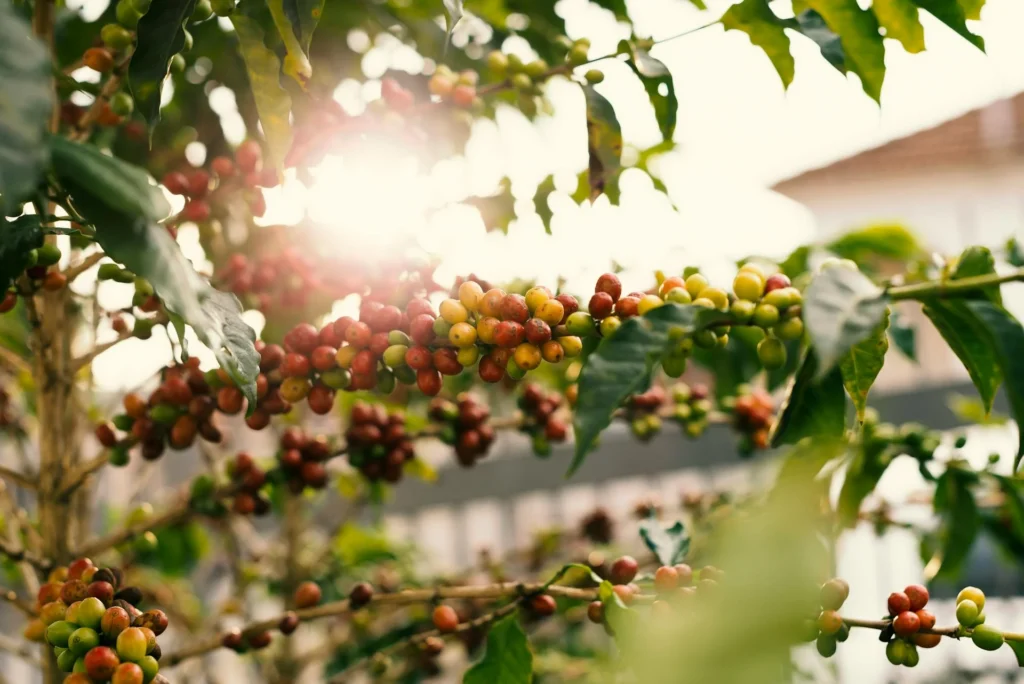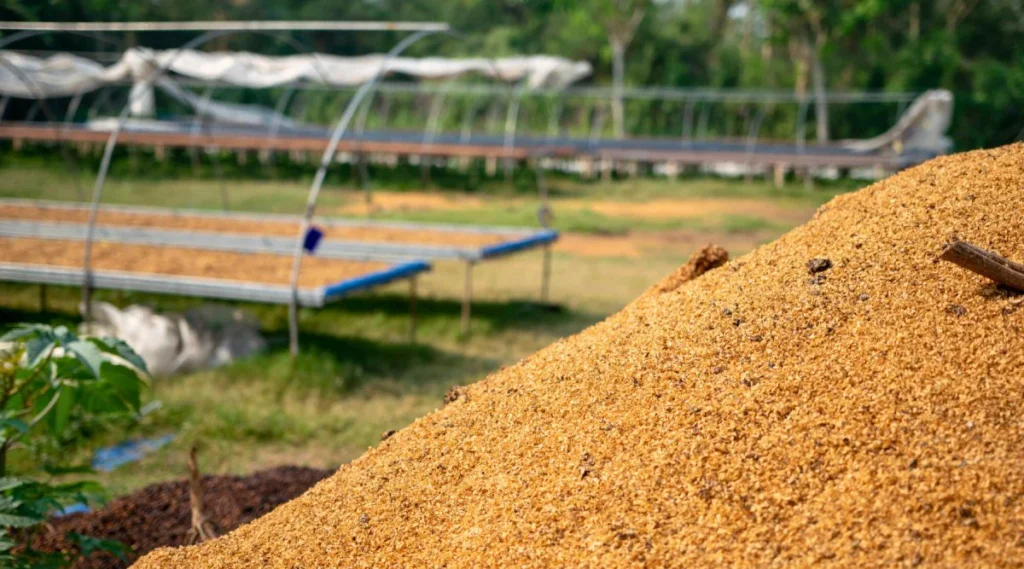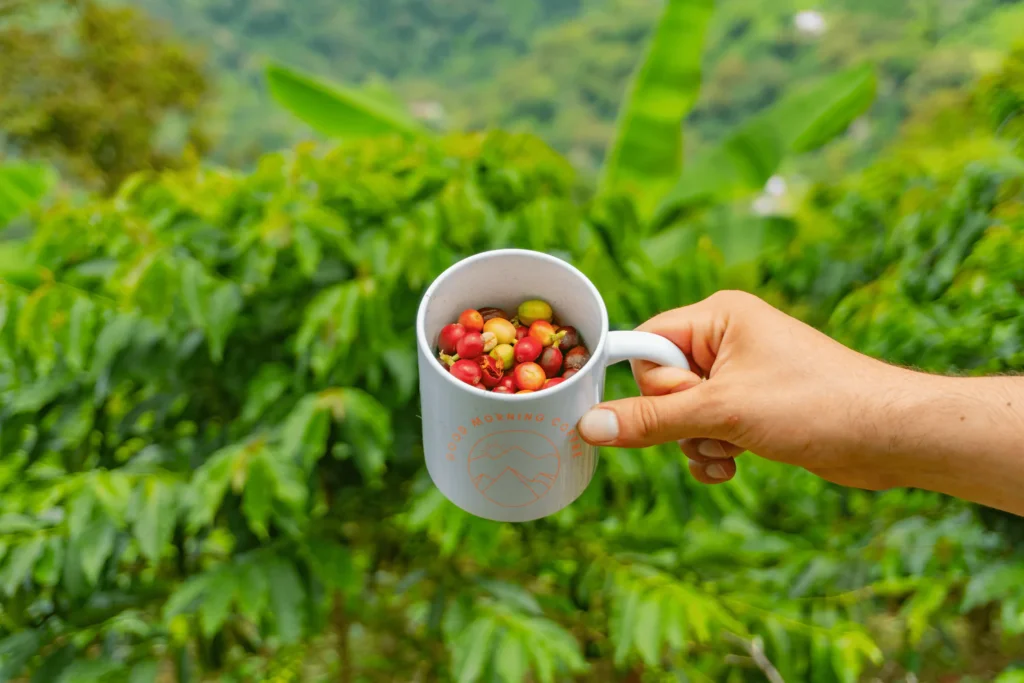Espresso isn’t just coffee; it’s a ritual, an experience, and a shot of pure energy. For many, drinking an espresso shot is a quick, daily habit. However, there’s an art to truly savoring and enjoying this concentrated brew.
Whether you’re a seasoned espresso lover or a curious newcomer, this guide will walk you through the essentials and techniques on how to drink espresso shot properly. Let’s dive into the world of espresso and discover how to make every sip count.
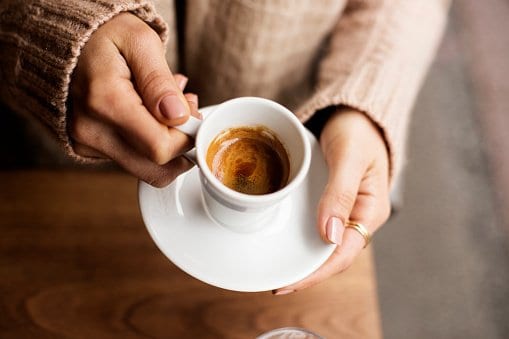
Understanding Espresso
Espresso is more than just a small, strong coffee; it’s a method, a tradition, and a science. Originating in Italy in the early 20th century, espresso has become the foundation of numerous coffee drinks and a staple in coffee culture worldwide.
The Origin
Espresso was invented in Italy, with Luigi Bezzera often credited for creating the first espresso machine in 1901. This innovation was aimed at brewing coffee faster, hence the name “espresso,” which means “pressed out” in Italian. The process involves forcing hot water through finely-ground coffee under high pressure, resulting in a concentrated, robust flavor.

Definition
An espresso shot is typically 1 ounce of coffee brewed by forcing a small amount of nearly boiling water through finely-ground coffee beans. This method extracts the rich, complex flavors quickly, producing a thick, syrupy consistency with a layer of crema on top. The crema is the golden, frothy layer that sits on the espresso, indicating a well-extracted shot.
What Sets Espresso Apart
Espresso is distinct from other coffee forms in several key ways:
- Concentration: Espresso has a much higher concentration of coffee solids compared to drip coffee, resulting in a stronger flavor and thicker consistency.
- Brewing Method: The pressurized brewing process of espresso is unique, requiring specialized equipment and finely-ground coffee beans.
- Versatility: Espresso serves as the base for many popular coffee drinks, such as lattes, cappuccinos, and Americanos, showcasing its adaptability in various preparations.
The Right Equipment
Creating the perfect espresso shot at home requires the right tools. Investing in quality equipment can make a significant difference in the taste and quality of your espresso. Here’s what you’ll need to get started:
Espresso Machine: The cornerstone of any good espresso is the espresso machine. While there are many types on the market, ranging from manual to super-automatic, the most common types are:
- Manual Machines: These require you to control every aspect of the brewing process, from grinding the beans to applying the right pressure. They offer the most control but also demand more skill.
- Semi-Automatic Machines: These automate some parts of the process, like water temperature and pressure, but still allow you to control the grind size and extraction time.
- Super-Automatic Machines: These do everything for you, from grinding the beans to brewing the shot, making them ideal for beginners or those who prefer convenience.

Grinder: A high-quality grinder is crucial for making a great espresso. Burr grinders are the best choice as they provide a consistent grind size, which is essential for proper extraction. Avoid blade grinders, as they produce uneven grounds.
Tamper: A tamper is used to compress the coffee grounds evenly into the portafilter. This ensures that the water flows through the coffee evenly, which is key to extracting a balanced shot. Look for a tamper that fits your portafilter perfectly and provides a comfortable grip.
Scale: A digital scale helps you measure the right amount of coffee grounds and water, ensuring consistency in every shot. Precision is key in making the perfect espresso, and a scale helps achieve that.
Fresh Coffee Beans: Lastly, the quality of your coffee beans makes a significant difference. Opt for freshly roasted beans and grind them just before brewing to preserve the flavor and aroma. Look for beans specifically roasted for espresso to get the best results.
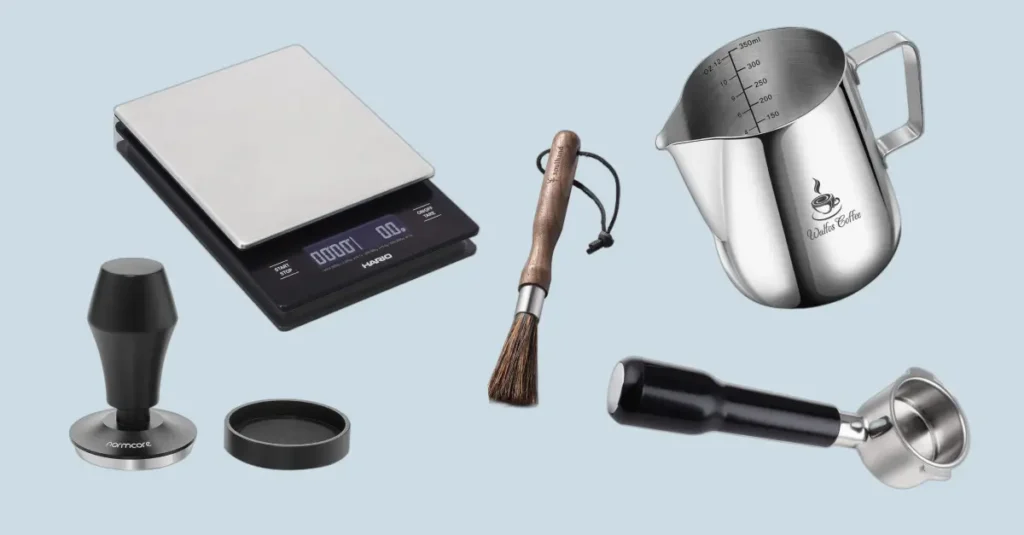
Preparation Before Sipping
To fully appreciate the rich and complex flavors of an espresso shot, it’s essential to prepare properly. This involves not only brewing the espresso itself but also getting yourself ready to savor it.
Grinding Your Beans
Grinding your coffee beans correctly is crucial for making a great espresso shot. The grind size and consistency directly impact the flavor and quality of your espresso. Here are some tips to help you get the perfect grind:
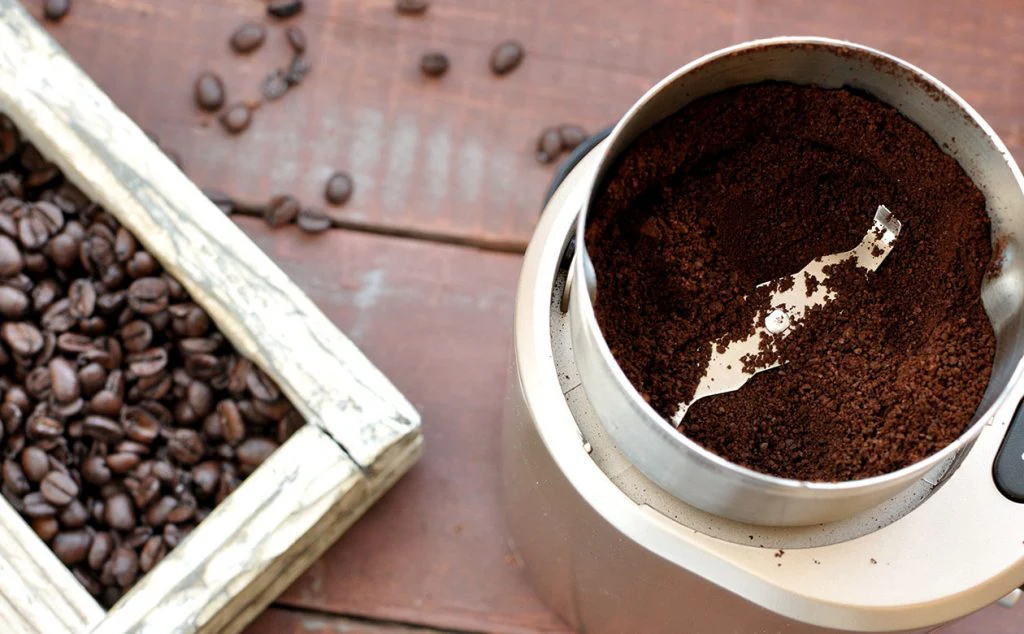
- Choose the Right Grinder: Invest in a burr grinder. Burr grinders provide a consistent grind size, which is essential for even extraction. Avoid blade grinders as they produce uneven grounds.
- Grind Size: The grind size for espresso should be fine, similar to powdered sugar. If the grind is too coarse, the water will flow through too quickly, resulting in a weak shot. If it’s too fine, the water will struggle to pass through, leading to over-extraction and bitterness.
- Adjusting the Grind: Fine-tune your grind size based on the taste of your espresso. If your shot is sour, try a finer grind. If it’s bitter, go a bit coarser. Small adjustments can make a big difference.
- Freshness: Grind your beans just before brewing. Coffee starts to lose its flavor and aroma shortly after grinding, so it’s best to grind only what you need for each shot.
- Uniformity: Ensure the grounds are uniform. Consistency in grind size helps in achieving an even extraction, resulting in a balanced and flavorful espresso.
Mastering the Art of Tamping
Tamping is the process of compressing the coffee grounds in the portafilter to create an even and level coffee bed. Proper tamping ensures that the water flows through the coffee evenly, which is crucial for a balanced extraction. Here are some techniques to master the art of tamping:

- Distribute Evenly: Before tamping, make sure the coffee grounds are evenly distributed in the portafilter. You can gently tap the sides or use a distribution tool to level the grounds.
- Apply Consistent Pressure: Use a tamper that fits your portafilter perfectly. Hold the tamper with a straight wrist and apply even pressure downward. Aim for about 30 pounds of pressure. Consistency is key.
- Level Tamp: Ensure that the tamp is level. A tilted tamp can cause uneven extraction, leading to channeling where water finds a path of least resistance and results in an inconsistent shot.
- Polish the Surface: After tamping, you can give the surface a slight twist to polish it. This helps to create a smooth, even surface for the water to flow through.
- Check Your Work: Inspect the tamped coffee bed to ensure it’s level and compact. If it looks uneven, you might need to redistribute the grounds and tamp again.
Preparing Yourself
- Cleanse Your Palate: To fully appreciate the flavors, it’s a good idea to cleanse your palate before drinking your espresso. A small glass of water can help refresh your taste buds.
- Set the Mood: Find a quiet moment and a comfortable place to enjoy your espresso. Espresso is best savored without distractions, allowing you to focus on the intricate flavors.
- The Right Temperature: Allow your espresso to cool slightly after brewing. Drinking it too hot can mask the flavors, while letting it cool for a minute or two can enhance the tasting experience.
The Art of Tasting Espresso
Tasting espresso is an art that involves more than just taking a quick sip. To fully appreciate the rich and complex flavors of an espresso shot, you need to engage your senses and follow a few simple steps. Here’s how to taste espresso correctly:
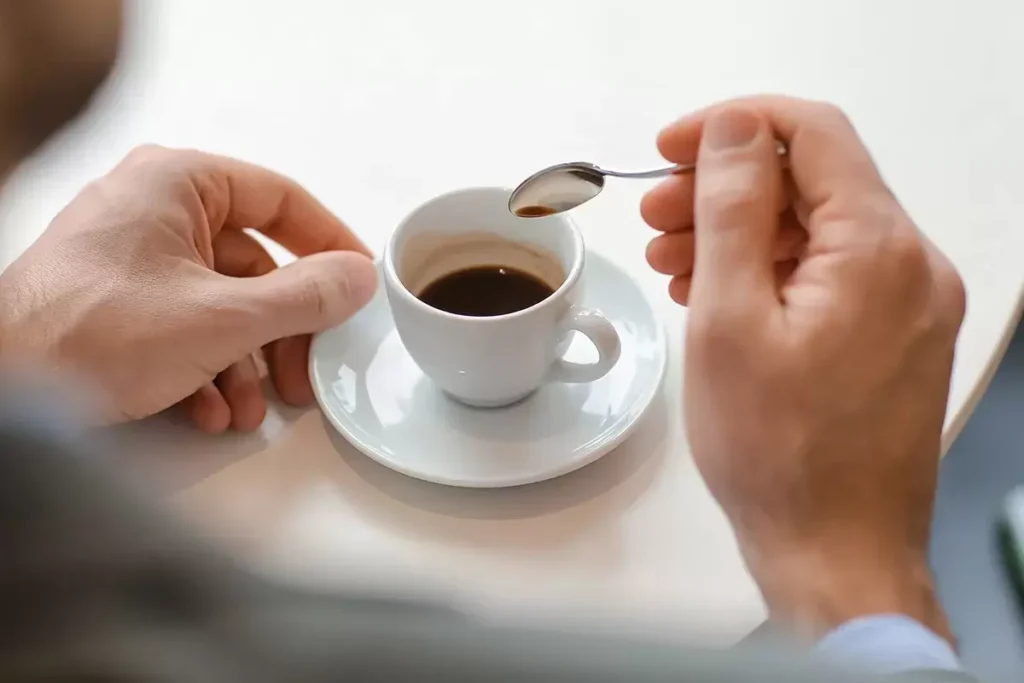
1. Observe: Before you take your first sip, take a moment to observe your espresso. Look at the crema, the golden-brown foam on top of the shot. A good crema indicates a well-extracted espresso and acts as a seal to keep the aroma and flavors intact.
2. Smell: Bring the cup close to your nose and take a deep inhale. The aroma of espresso can give you hints about its flavor profile. You might detect notes of chocolate, nuts, fruits, or even floral hints. Smelling the espresso primes your palate and enhances the tasting experience.
3. Sip and Hold: Take a small sip and let the espresso rest on your tongue for a few seconds. This allows your taste buds to pick up the various flavors and nuances. Pay attention to the initial flavors and how they evolve. You might notice a combination of sweetness, acidity, bitterness, and body.
4. Evaluate: Consider the following elements as you taste:
- Flavor: Identify the distinct flavors. These can range from sweet and fruity to rich and chocolatey.
- Acidity: Notice the brightness or sharpness in the espresso. Good acidity adds complexity and balance.
- Body: Feel the weight and texture of the espresso in your mouth. A good shot will have a full, creamy body.
- Finish: Observe the aftertaste. A high-quality espresso will have a pleasant, lingering finish.
5. Repeat: Take another sip and repeat the process. With each sip, try to focus on different aspects of the espresso. Notice how the flavors change and develop as the espresso cools slightly.
6. Compare: If possible, taste different espresso shots from various beans and roasts. Comparing them side by side helps you develop a deeper understanding and appreciation of the diverse flavor profiles espresso can offer.
First Sip: What to Expect
Your first sip of espresso is a sensory experience that can be both exciting and complex. Here’s what to expect from that initial taste:
Flavors
- Intensity: The first thing you’ll notice is the intensity of the flavor. Espresso is a concentrated form of coffee, so expect a strong, bold taste that hits your palate immediately.
- Bitterness: A slight bitterness is normal and can add to the depth of flavor. However, it shouldn’t be overwhelming. If it is, the espresso might be over-extracted.
- Sweetness: A well-brewed espresso will have a natural sweetness that balances the bitterness. This sweetness often comes from the caramelization of sugars during the roasting process.
- Acidity: You might detect a bright, sharp acidity, which adds a lively character to the espresso. This should be pleasant and not sour or harsh.
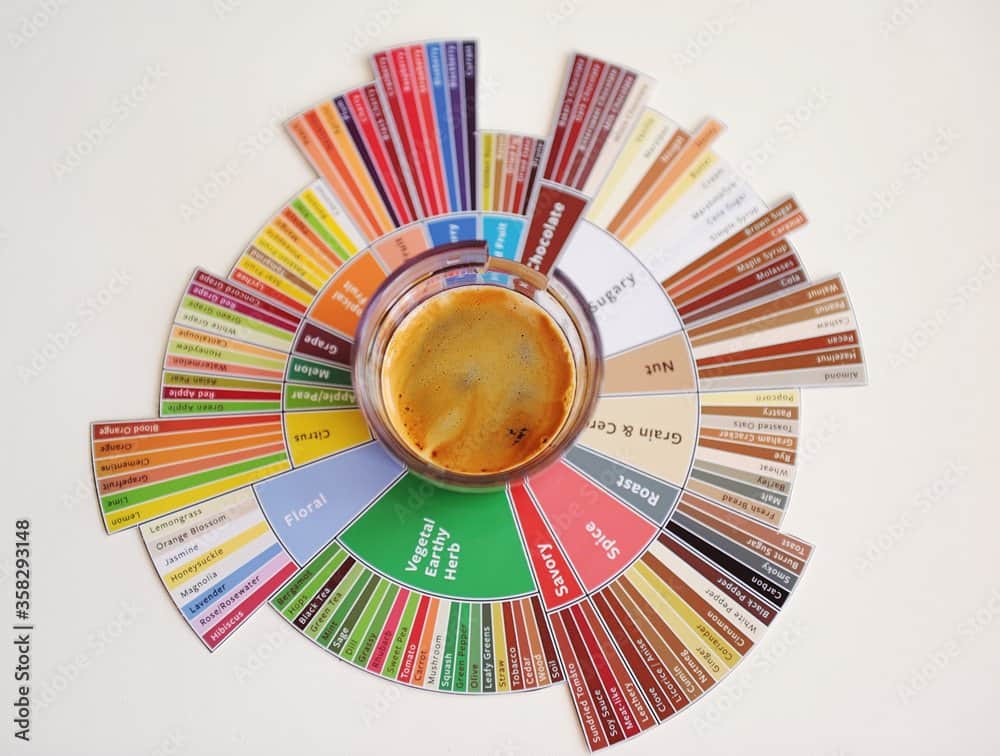
Sensations
- Body: The texture, or body, of the espresso should be full and creamy, coating your mouth evenly. This richness is a key characteristic of a good espresso shot.
- Crema: The crema, or the frothy layer on top, will give you a smooth mouthfeel and can be slightly sweet and nutty.
- Aftertaste: Pay attention to the aftertaste. A high-quality espresso will leave a pleasant, lingering flavor that invites you to take another sip.

Understanding the Flavor Profile
Breaking down the flavor profile of a well-brewed espresso can help you appreciate its complexity. Here are some common flavor notes you might encounter:
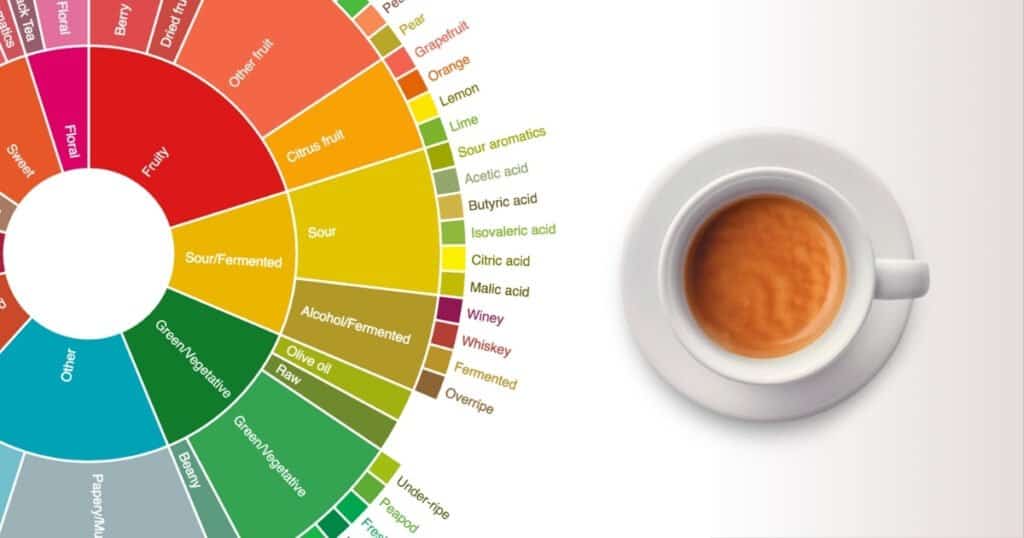
Sweetness
- Caramel: Often found in medium to dark roasts, caramel notes add a pleasant sweetness and depth.
- Chocolate: A common flavor in espresso, ranging from milk chocolate to dark, bittersweet chocolate.
- Vanilla: Subtle vanilla notes can add a creamy, sweet undertone.
Fruity
- Citrus: Bright, zesty notes like lemon or orange can add a refreshing acidity.
- Berry: Notes of berries, such as raspberry or blueberry, add a fruity sweetness.
- Stone Fruit: Flavors like peach or apricot provide a mellow, juicy sweetness.
Nutty
- Almond: A light, sweet nuttiness often found in well-balanced espressos.
- Hazelnut: A richer, more robust nutty flavor that can add warmth and depth.
Spicy
- Cinnamon: A hint of spice that adds warmth and complexity.
- Clove: A deeper, more pungent spice note that can enhance the overall flavor profile.
Earthy
- Herbal: Subtle hints of herbs like basil or thyme can add an intriguing complexity.
- Woody: Notes of cedar or oak can provide a grounding, earthy quality.
Floral
- Jasmine: A delicate, sweet floral note that adds elegance to the flavor profile.
- Lavender: A soft, soothing floral hint that can add a unique twist.
Balancing Act
A well-brewed espresso will balance these flavors harmoniously. The sweetness should counterbalance the bitterness, the acidity should add brightness without being overpowering, and the body should be rich and full without being too heavy. Each sip should reveal new layers of flavor, making the experience both enjoyable and complex.
Enhancing the Experience
Drinking an espresso is not just about consuming a beverage; it’s about enjoying a ritual. Here are some ways to enhance your espresso drinking experience:
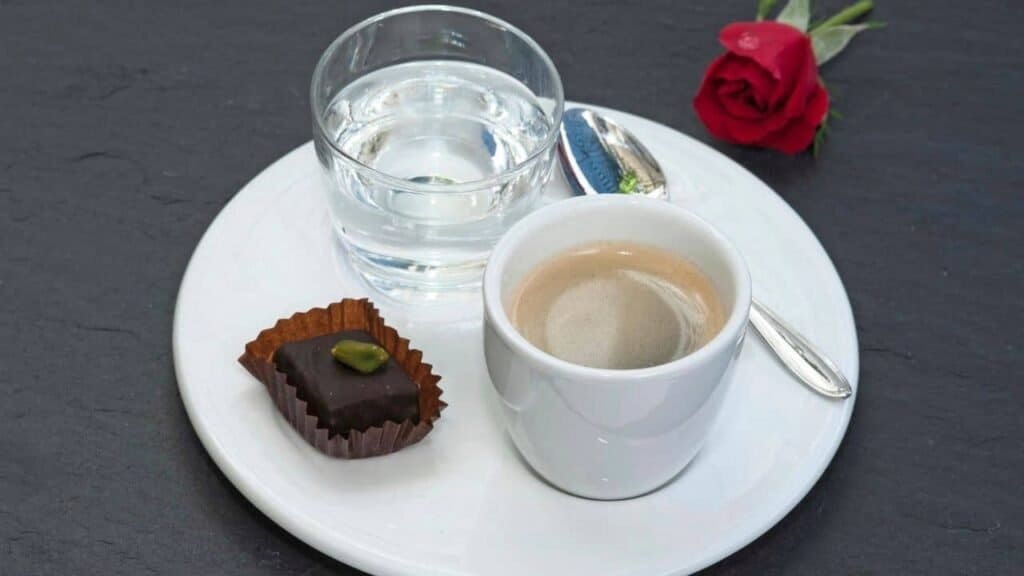
1. Use Quality Ingredients
- Fresh Beans: Always use freshly roasted coffee beans. Beans that are too old will lose their flavor and aroma.
- Filtered Water: The quality of water can significantly impact the taste of your espresso. Use filtered water to avoid any impurities that could affect the flavor.
2. Temperature Matters
- Preheat Your Cup: Preheat your espresso cup by rinsing it with hot water. This helps maintain the temperature of your espresso, ensuring it stays warm longer.
- Optimal Brewing Temperature: Ensure your espresso machine is brewing at the right temperature, typically between 195°F and 205°F (90°C – 96°C).
3. Experiment with Additions
- Sugar and Sweeteners: Adding a small amount of sugar can enhance the flavors and balance the bitterness. Experiment with different types of sweeteners like raw sugar, honey, or flavored syrups.
- Milk and Cream: If you enjoy a creamier texture, add a dash of milk or cream. This can mellow the intensity and create a smoother taste.
- Spices: A sprinkle of cinnamon or cocoa powder on top of the crema can add an interesting twist to the flavor profile.
4. Pair with Food
- Pastries: Traditional Italian pastries like biscotti, cannoli, or croissants pair wonderfully with espresso, complementing its rich flavors.
- Chocolate: A piece of dark chocolate can enhance the bitter and sweet notes of the espresso, creating a delightful pairing.
- Fruit: Fresh fruits, especially citrus or berries, can provide a refreshing contrast to the deep flavors of the espresso.
5. Create a Ritual
- Set the Scene: Enjoy your espresso in a peaceful environment. Whether it’s your favorite spot in the house or a cozy corner at a café, the ambiance can significantly enhance the experience.
- Take Your Time: Savor each sip slowly. Pay attention to the flavors and aromas. Drinking espresso is not a race; it’s an opportunity to relax and enjoy.
6. Experiment with Brewing Techniques
- Different Machines: Try using different types of espresso machines, from manual to automatic, to see which one produces your preferred shot.
- Grind and Brew Adjustments: Experiment with different grind sizes and brewing times to fine-tune your espresso to your taste.
7. Learn and Explore
- Attend Tasting Events: Coffee shops and roasters often hold tasting events. Attending these can help you understand and appreciate the different flavor profiles of espresso.
- Read and Research: There’s a wealth of knowledge available about coffee and espresso. Books, blogs, and online courses can deepen your understanding and appreciation.
To Add Sugar or Not?
The debate around adding sugar to espresso is a long-standing one, with purists and modern coffee enthusiasts often having different opinions. Here’s a breakdown of both perspectives and some guidance on when it might be appropriate to add sugar to your espresso.

- The Purist Perspective: Traditionalists argue that adding sugar to espresso masks the true flavors and nuances of the coffee. They believe that a well-brewed espresso should be enjoyed as is, allowing you to fully appreciate the complexity of the beans and the skill of the barista.
- The Modern Approach: On the other hand, many modern coffee drinkers prefer to add a touch of sweetness to balance the bitterness and enhance the overall flavor profile. This approach is particularly common in countries where sweeter coffee drinks are the norm.
When to Add Sugar
- Personal Preference: Ultimately, whether to add sugar comes down to personal preference. If you enjoy a slightly sweeter taste, don’t hesitate to add a small amount of sugar.
- Bitterness: If your espresso tastes overly bitter, a pinch of sugar can help balance the flavors.
- Experimentation: Try tasting your espresso both with and without sugar. This can help you understand how sugar affects the flavor profile and decide what you prefer.
- Cultural Context: In some cultures, adding sugar to espresso is standard practice. For instance, in Italy, it’s common to add a small spoonful of sugar to espresso.
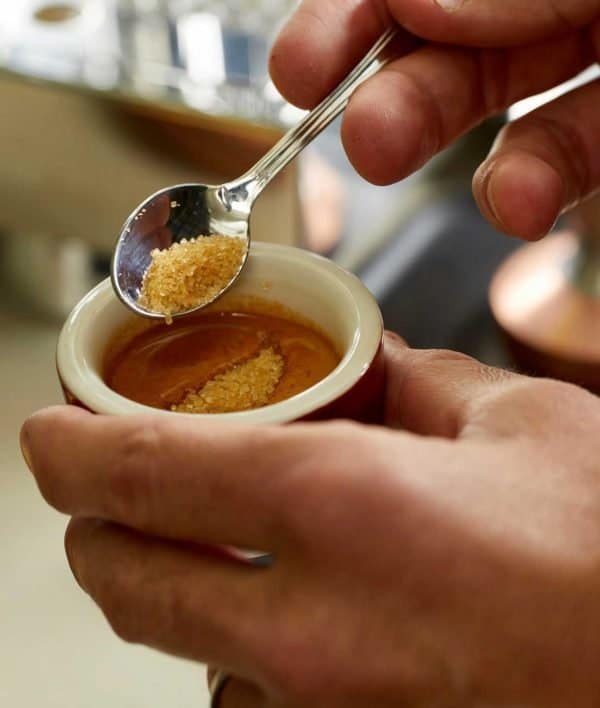
Ideal Pairings with Espresso
Pairing food with espresso can enhance the overall tasting experience, highlighting the flavors of both the espresso and the food. Here are some recommendations on what to eat with espresso to complement its flavors:
Pastries
- Biscotti: This traditional Italian cookie is perfect for dipping into espresso. Its crunchy texture and mild sweetness complement the strong flavors of the coffee.
- Croissants: A flaky, buttery croissant pairs beautifully with espresso, balancing its intensity with a light, airy pastry.
- Cannoli: The creamy, sweet filling of a cannoli contrasts nicely with the boldness of an espresso shot.
Chocolate
- Dark Chocolate: A piece of dark chocolate enhances the bitter and sweet notes of espresso, creating a luxurious pairing.
- Chocolate Croissants: Combining the richness of chocolate with the flaky texture of a croissant, this pastry is a delightful match for espresso.
Fruits
- Citrus Fruits: Oranges, grapefruits, and other citrus fruits can provide a refreshing contrast to the deep flavors of espresso.
- Berries: Fresh berries, such as raspberries or blueberries, add a sweet and tangy element that complements the coffee’s complexity.
Nuts
- Almonds: The subtle, sweet nuttiness of almonds pairs well with espresso, adding a complementary flavor without overpowering the coffee.
- Hazelnuts: These nuts provide a richer, more robust nutty flavor that enhances the espresso experience.
Cheese
- Hard Cheeses: Parmesan or pecorino can be an interesting pairing, adding a salty, umami contrast to the espresso.
- Soft Cheeses: A mild, creamy cheese like brie can provide a smooth texture that balances the intensity of the coffee.
Savory Snacks
- Prosciutto: The salty, savory flavor of prosciutto can create an intriguing contrast with the boldness of espresso.
- Olives: Briny olives add a unique flavor profile that can enhance the tasting experience.
Common Mistakes to Avoid
Making and drinking espresso is an art, and even the smallest mistake can affect the taste and quality of your shot. Here are some common pitfalls and how to avoid them:
1. Using Stale Beans
Mistake: Using beans that are old and have lost their freshness. Solution: Always use freshly roasted beans, ideally within two weeks of roasting. Store them in an airtight container away from light and heat to preserve their freshness.
2. Incorrect Grind Size
Mistake: Using the wrong grind size, which can lead to over or under-extraction. Solution: Use a burr grinder to achieve a consistent, fine grind size suitable for espresso. Adjust the grind size as needed based on your machine and taste preferences.
3. Inconsistent Tamping
Mistake: Tamping the coffee grounds unevenly or with inconsistent pressure. Solution: Ensure even distribution of coffee grounds in the portafilter and use consistent pressure when tamping. Aim for a level coffee bed to promote even extraction.
4. Ignoring Water Quality
Mistake: Using tap water that may contain impurities affecting the flavor. Solution: Use filtered water to ensure the best possible taste in your espresso.
5. Rushing the Process
Mistake: Not allowing enough time for proper extraction, leading to weak or bitter espresso. Solution: Allow the extraction process to take around 25-30 seconds. Patience is key to achieving a balanced shot.
Overcoming Over-Extraction
Over-extraction occurs when water passes through the coffee grounds too slowly, extracting too much from the grounds and resulting in a bitter taste. Here’s how to recognize and correct it:
Recognizing Over-Extraction
- Bitter Taste: The most common sign of over-extraction is a pronounced bitter flavor.
- Dark Crema: A very dark, almost burnt-looking crema can indicate over-extraction.
- Dry Puck: If the used coffee puck is dry and hard, it may be a sign that the extraction took too long.
Correcting Over-Extraction
- Adjust Grind Size: Use a coarser grind to reduce the extraction time. A finer grind increases resistance, slowing down the flow.
- Reduce Dosage: Decrease the amount of coffee in the portafilter. Too much coffee can slow the flow and lead to over-extraction.
- Check Tamping Pressure: Ensure you’re not tamping too hard. Excessive pressure can compact the grounds too much, slowing the extraction.
- Monitor Water Temperature: Ensure your machine’s water temperature is between 195°F and 205°F. Higher temperatures can cause over-extraction.
Avoiding Temperature Mishaps
Maintaining the ideal temperature for brewing and serving espresso is crucial for achieving the best flavor. Here are some tips to avoid temperature-related issues:
Brewing Temperature
- Preheat Your Machine: Allow your espresso machine to fully warm up before brewing. This ensures that the water is at the correct temperature.
- Check Machine Settings: Regularly check and calibrate your machine’s temperature settings to ensure consistency.
- Use Fresh Water: Start with cold, filtered water each time you brew to maintain consistent temperature control.
Serving Temperature
- Preheat Your Cup: Warm your espresso cup with hot water before brewing. This helps maintain the temperature of the espresso when it’s served.
- Avoid Delays: Serve your espresso immediately after brewing to enjoy it at its optimal temperature. Letting it sit for too long can cause it to cool and lose flavor.
- Monitor Ambient Temperature: Be mindful of the room temperature where you’re enjoying your espresso. Cold environments can cool your espresso quickly, so consider using insulated cups if necessary.
Disclosure: Our blog contains affiliate links to products. We may receive a commission for purchases made through these links. However, this does not impact our reviews and comparisons. We try our best to keep things fair and balanced, in order to help you make the best choice for you.

